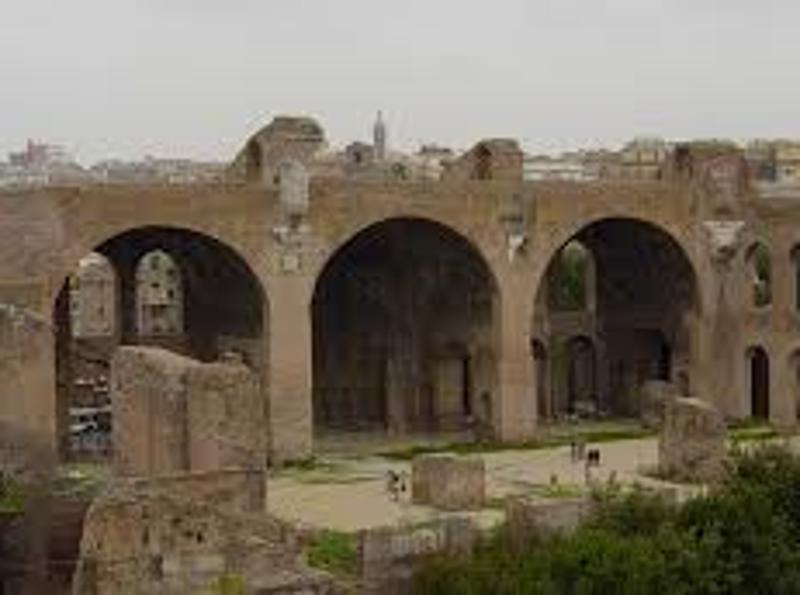Classics 304: Eternal Rome Digital Portfolio
There are some big things in Rome. There are some especially big churches in Rome. Constantine’s Basilica may not be the most well known church in all of Rome but it can hold a candle to any of them in terms of sheer size. The problem with Constantines Basilica is that its only a ruins now, all that remain are a few arches where the giant collosi would have been. Despite this its still awe inspiring standing next to and looking up the giant columns holding up the few remaining ruins. This basilica has a lot more meaning than being a huge building however. This building represents the transition of the Roman empire from a polytheistic state to a centerpiece for Christianity. Emperor Constantine was the one who legalized Christianity and later made it the official religion of the empire, and so played an absolutely massive part in the popularization of Christianity. This would change the course of the lives of the citizens of Rome forever. No longer would they make sacrifices to the many gods in order to appease them and no longer would the great temples they had built bear the meaning they once did. This represented a transition in the life of every single Roman in the city and so represents a huge part of a roman citizens life.
kashford
22 chapters
16 Apr 2020
Chapter 8: Constantine's Basilica
Roman Forum
There are some big things in Rome. There are some especially big churches in Rome. Constantine’s Basilica may not be the most well known church in all of Rome but it can hold a candle to any of them in terms of sheer size. The problem with Constantines Basilica is that its only a ruins now, all that remain are a few arches where the giant collosi would have been. Despite this its still awe inspiring standing next to and looking up the giant columns holding up the few remaining ruins. This basilica has a lot more meaning than being a huge building however. This building represents the transition of the Roman empire from a polytheistic state to a centerpiece for Christianity. Emperor Constantine was the one who legalized Christianity and later made it the official religion of the empire, and so played an absolutely massive part in the popularization of Christianity. This would change the course of the lives of the citizens of Rome forever. No longer would they make sacrifices to the many gods in order to appease them and no longer would the great temples they had built bear the meaning they once did. This represented a transition in the life of every single Roman in the city and so represents a huge part of a roman citizens life.

1.
Introduction
2.
Chapter One: The Gemini Statues
3.
Chapter 2: The Largo Argentina
4.
Chapter Three: The Temple of Jupiter
5.
Chapter 4: The Via Sacra
6.
Chapter Five: The Colosseo
7.
Chapter 6: Statue of Augustus
8.
Chapter Seven: The Arch of Titus
9.
Chapter 8: Constantine's Basilica
10.
Chapter Nine: The Tiber River
11.
Chapter 10: The Sarcophagi
12.
Chapter 11: Caesars Forum
13.
Chapter Twelve: St. Peters Basilica
14.
Chapter 13: Roman Sewers
15.
Chapter Fourteen: Egyptian Obelisk
16.
Chapter 15: The Pantheon
17.
Chapter Sixteen: Bernini Bridge
18.
Chapter 17: The Wedding Cake
19.
Chapter Eighteen: The Mussolini Window
20.
Chapter 19: Basilica of Saint Lawrence
21.
Chapter 20: The Piazza del Popolo
22.
Conclusion: The more things change